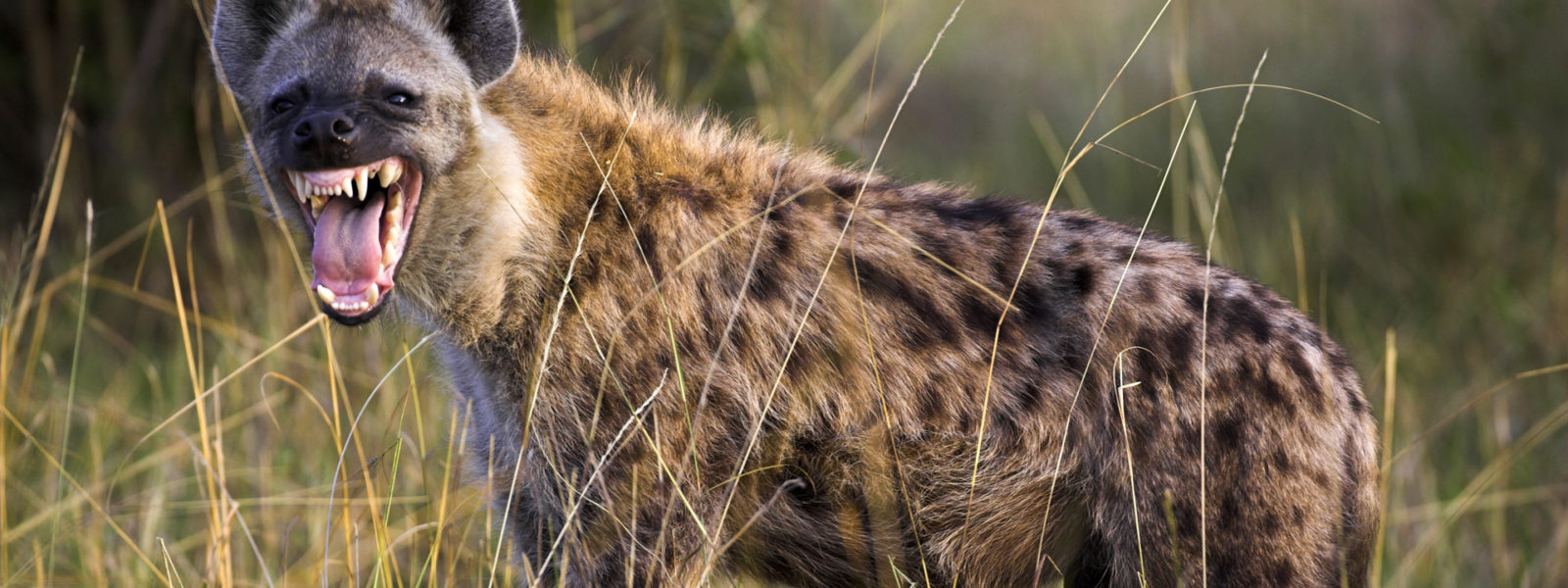The spotted Hyena is one of Africa’s most commonly sighted large carnivore. They are fairly large in build and have relatively short torsos with lower hindquarters, and sloping backs. They have excellent night-time vision and hearing.
The Spotted hyena is a famed scavenger and is known to feast on leftovers of other hunters. However, on the unknown side, Spotted hyenas can also mean to be great hunters. I have seen them successfully hunt and take down a wildebeest in the unending plains of the famous Serengeti, Ngorongoro crater area and in the Masai Mara, In Uganda’s Lake Mburo National Park, I have witnessed them creep up, and kill a zebra, in Murchison falls National park they have ganged up on an oribi and had it for a starter for the day – these fellas too can hunt don’t take them for weaklings.
Interesting Facts about the Spotted Hyena
- Hyenas in Africa are in three (03) species, the spotted hyena is the largest of three (03) hyena species while the Brown and striped hyenas are the other two smaller species. Although hyenas appear similar to dogs, they are actually more closely related to cats. They live throughout much of Africa. Spotted hyenas live together in large groups called clans that may include up to 80 individuals and are led by females.
- Spotted hyenas have good hearing and sharp eyesight at night. They are fast and can run at a speed of 64 km/h for long distances without tiring. Packs or Clans work together effectively to isolate a herd animal, sometimes one that is ill or young, and chase it till they kill it. The victors often fight for the Kill, either among themselves or with other powerful animals like lions and leopards. Spotted hyenas are quite vocal and make a wide variety of sounds, including the “laughing” that has long been associated with their name – the laughing hyenas.
- The length of the gestation period tends to vary greatly, though 110 days is the average length of time.
- Female spotted hyenas are larger and more aggressive than males, and their genitalia is heavily ‘masculinized’ this poses a threat to male hyena when it comes to the time of courtship and copulation.
- Hyenas usually bear litters of 2 – 4 cubs. The Cubs begin to eat meat from kills near the den at about five months, but they are suckled for as long as 12 to 18 months — an unusually long time for carnivores. This is probably a necessity, as most kills are made far from the den, and hyenas, unlike jackals and hunting dogs, do not bring back food and regurgitate it for their young. At about one year, cubs begin to follow their mothers on their hunting and scavenging forays. Until then, they are left behind at the den with a babysitting adult.
- Spotted hyenas are very territorial: They are organized into territorial clans of related individuals. The center of clan activity is the den, where the cubs are raised, and individuals meet. They mark and patrol their territories by depositing a strong-smelling substance produced by the anal glands on stalks of grass along the boundaries. “Latrines,” places where members of a clan deposit their droppings, also mark territories.


